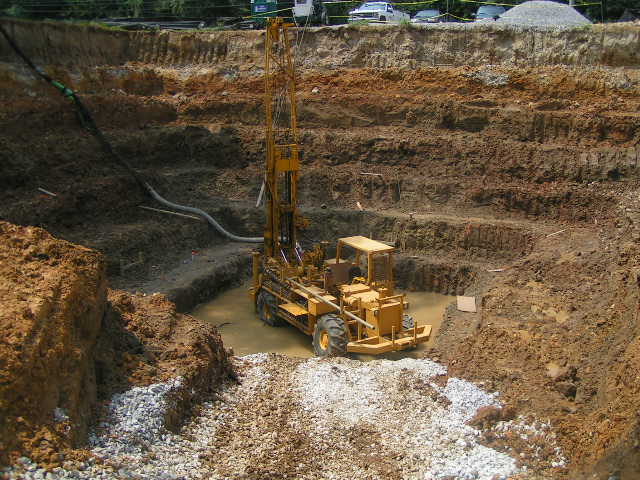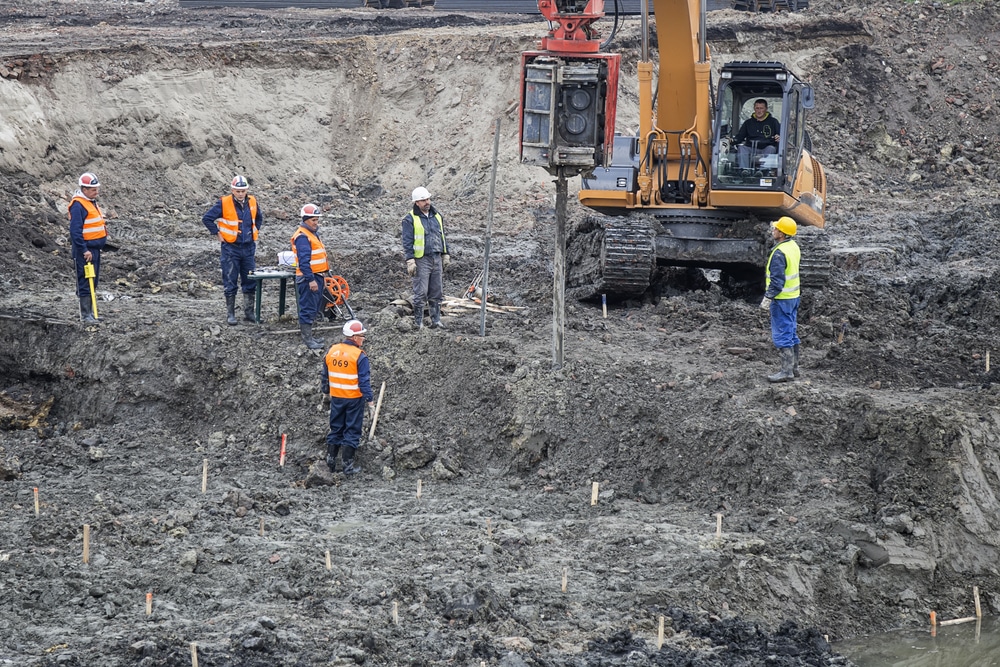Recognizing the Vital Role of the Geotechnical Industry in Modern Construction Projects and Facilities Advancement
The geotechnical industry is a cornerstone of modern-day building and framework development, providing vital insights into soil behavior that straight affect job end results. Via sophisticated soil assessments and innovative engineering options, geotechnical experts not just make certain structural stability however additionally address sustainability concerns in the middle of progressing ecological requirements.
Value of Dirt Evaluation
Soil evaluation plays an essential duty in the geotechnical sector, acting as the foundation for educated decision-making in building and construction jobs. Precise soil evaluation is vital for identifying the viability of a website for different kinds of structures, including property homes, commercial buildings, and bridges. By evaluating soil composition, density, strength, and wetness content, designers can expect possible difficulties and alleviate threats connected with ground instability, erosion, and negotiation.
The assessment process normally involves a series of tests and monitorings that provide important information about the subsurface conditions. This data informs the design and building and construction processes, making sure that frameworks are improved strong ground with ample support. Furthermore, recognizing the dirt account allows designers to select proper building and construction approaches and materials, maximizing resource utilization and reducing costs.
In addition to making certain structural honesty, dirt analysis adds to ecological sustainability. By determining possible contamination or adverse effects on bordering ecosystems, engineers can execute strategies to shield these natural deposits. In general, comprehensive soil assessment is important in the geotechnical field, underpinning the safety, effectiveness, and ecological obligation of construction tasks.
Secret Geotechnical Techniques
A selection of essential geotechnical strategies are employed to assess and enhance the stability and efficiency of building and construction sites. One foundational technique is soil tasting and screening, which enables engineers to figure out the chemical and physical residential or commercial properties of the ground. This details is essential for making informed choices relating to foundation layout and building and construction techniques.
An additional vital technique is site characterization, which entails the in-depth assessment of dirt and rock problems through methods such as borehole exploration and in-situ screening. Techniques like Criterion Infiltration Examinations (SPT) and Cone Penetration Tests (CPT) supply useful information on dirt strength and stratigraphy.
Ground enhancement strategies, such as soil stabilization and grouting, are also essential in improving the load-bearing capacity of weak soils. These techniques can alleviate negotiation and boost general website conditions.
In addition, slope stability evaluation is critical for recognizing potential landslide risks and making sure the safety of excavations. This analysis commonly uses mathematical modeling and limitation equilibrium approaches to forecast dirt habits under numerous problems.
Integrating these geotechnical techniques into construction planning not just optimizes project results yet also makes sure the long-term sustainability of infrastructure advancement.
Impact on Building And Construction Safety And Security

In addition, effective geotechnical engineering involves carrying out reduction methods for determined dangers. This might include soil stablizing methods, keeping frameworks, or drain systems to minimize hydrostatic stress. By addressing these elements, construction teams can decrease the likelihood of mishaps and improve employee safety and security.
In addition, constant tracking of website conditions is important during building. Geotechnical instruments can offer real-time data pertaining to ground motion and stability, enabling timely interventions when required.
Basically, the geotechnical industry plays a pivotal role in Homepage safeguarding building projects. By focusing on ground honesty and using extensive assessment methods, the geotechnical market not just secures the workforce yet also adds to the longevity and integrity of constructed infrastructure.
Sustainability in Geotechnical Practices

In addition, geotechnical designers are now employing sophisticated innovations, such as geosynthetics, which enhance dirt security while minimizing the quantity of material needed. This not just saves resources however likewise causes less waste generation (geotechnical engineers). The combination of lasting style concepts into geotechnical engineering motivates making use of renewable power resources in building and construction processes, better decreasing carbon discharges
Additionally, extensive website assessments are crucial for determining possible ecological effects prior to building starts. By carrying out these evaluations, geotechnical experts can create techniques that reduce damaging effects, ensuring compliance with ecological guidelines. On the whole, the emphasis on sustainability within geotechnical practices not only contributes to the longevity and resilience of infrastructure yet likewise promotes an accountable technique to land and resource monitoring. visit This dedication is important for cultivating lasting growth in the modern construction landscape.
Future Trends in Geotechnical Design
Innovation is driving the future of geotechnical engineering, as emerging methods and innovations reshape the sector. The assimilation of advanced information analytics and expert system is set to transform site examination and threat analysis, making it possible for designers to make more informed decisions based on real-time data. The usage of geosynthetic materials is getting traction, supplying sustainable solutions that boost soil security and minimize environmental impact - tailings engineer.
An additional significant fad is the fostering of automated and robotic systems for surveillance and building procedures. These modern technologies not just boost precision yet likewise enhance security by decreasing human involvement in hazardous settings. Additionally, the implementation of Structure Info Modeling (BIM) in geotechnical design helps with enhanced partnership amongst stakeholders, maximizing job distribution and minimizing costs.
As climate modification presents brand-new challenges, the market is significantly concentrating on learn the facts here now durability and adaptability in design practices, ensuring facilities can withstand extreme weather occasions. Finally, the continuous fad towards sustainability will certainly drive innovation in eco-friendly materials and techniques, straightening geotechnical design with more comprehensive ecological objectives. Jointly, these patterns will certainly shape an extra efficient, lasting, and resistant geotechnical landscape for future jobs.
Final Thought

The geotechnical market is a keystone of modern construction and infrastructure development, supplying important insights into soil habits that straight affect project results. consulting engineer.Dirt evaluation plays an essential role in the geotechnical industry, serving as the structure for informed decision-making in building and construction jobs. In general, detailed dirt evaluation is essential in the geotechnical area, underpinning the safety and security, effectiveness, and environmental responsibility of construction projects
Building safety is substantially affected by geotechnical techniques, as the security and stability of the ground straight influence the general safety and security of a construction site.In verdict, the geotechnical industry is crucial in contemporary building and facilities growth, providing important assessments that ensure structural stability and safety.